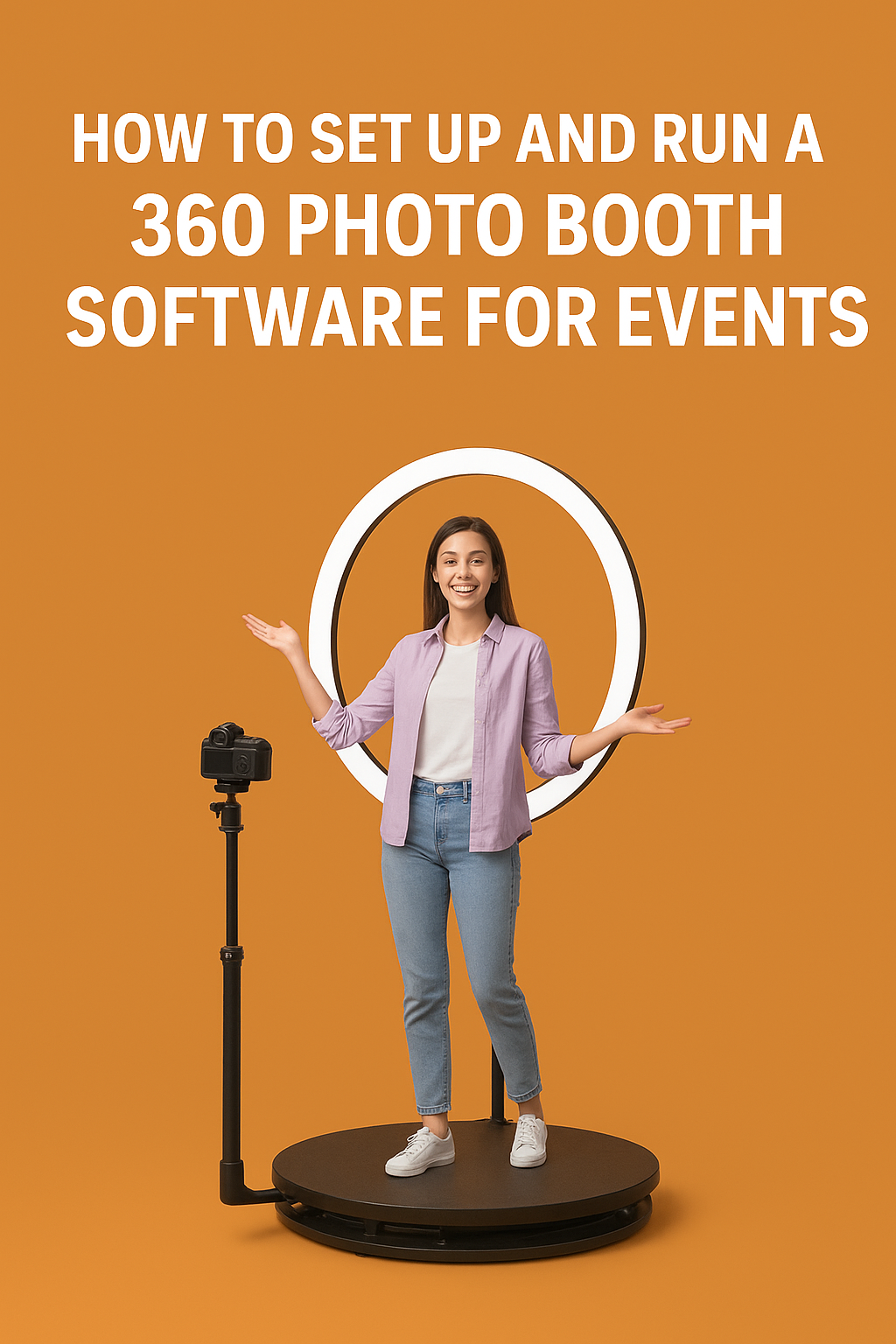How to Set Up and Run a 360 Photo Booth Software for Events
Event entertainment has evolved — and 360 photo booths have become one of the most exciting and immersive attractions at modern gatherings. From weddings and product launches to brand activations, these spinning video experiences are redefining how people capture memories.

Setting up and running a 360 photo booth software isn’t just about the hardware — it’s about creating a seamless, shareable, and engaging experience that guests love.
Here’s a step-by-step guide to help you get started, along with pro tips to ensure every spin delivers a “wow” moment.
1. Choose the Right 360 Photo Booth Equipment
Before diving into software, make sure your booth hardware is reliable and event-ready.
You’ll need:
- A 360 spinning platform (typically 80–100 cm for standard use)
- A camera mount (often for smartphones or mirrorless cameras)
- LED lighting or ring lights for better visibility
- Stable tripod or arm to avoid shake during rotation
Tip: Look for booths that can handle up to 250–300 kg and support smooth 360° spins at adjustable speeds.
2. Select a Reliable 360 Photo Booth Software
The software is the heart of the experience — it controls the camera, timing, effects, and output. Choose one that’s AI-enabled and allows easy customization.
Key features to look for:
- Slow-motion & boomerang video effects
- AI-powered filters & AR overlays
- Real-time social sharing (WhatsApp, Instagram, QR code)
- Custom branding & event templates
- Cloud-based storage & analytics
Many event professionals use platforms like iBoothMe, which combine hardware, software, and AI capabilities to make setup simple while delivering stunning 360 videos.
3. Install, Calibrate, and Test the Setup
Once your equipment and software are ready:
- Position the booth in an open space (minimum 8x8 ft area).
- Ensure lighting is even — avoid harsh shadows.
- Calibrate camera angles in your software for optimal framing.
- Test spin speed and recording duration (usually 5–7 seconds works best).
Always run a few test shots to fine-tune the output before the event begins.
4. Customize Branding and Templates
Your 360 photo booth videos should reflect your event’s theme or brand identity. Use your software’s editing tools to:
- Add logos, event hashtags, and overlays
- Apply custom intro/outro animations
- Choose suitable music tracks or sound effects
Branded video content helps boost social sharing and increases event visibility by up to 45%, according to event marketing reports (EventMB, 2024).
5. Engage Guests with Real-Time Sharing
Instant gratification is key. Ensure your setup supports:
- Live sharing via QR codes, email, or SMS
- Auto uploads to branded microsites or social pages
- Analytics tracking (to measure engagement and reach)
Studies show that events using real-time sharing experiences see 2.3x higher social media engagement than those that don’t.
6. Monitor and Optimize During the Event
Assign an attendant or technician to oversee operations — they can assist guests, fix lighting, or adjust settings on the fly. After the event, use your software’s analytics dashboard to track video downloads, shares, and impressions for reporting ROI.
✨ Final Thoughts
A 360 photo booth is more than just a camera setup — it’s a storytelling tool that merges technology, creativity, and social connection. With the right 360 photo booth software, like iBoothMe, you can turn any event into an unforgettable, share-worthy experience.
Contact us now :
UAE
Mazaya Business Avenue AA1, 1402, Jumeirah Lakes Towers, Dubai, UAE
+971 4 44 88 563





